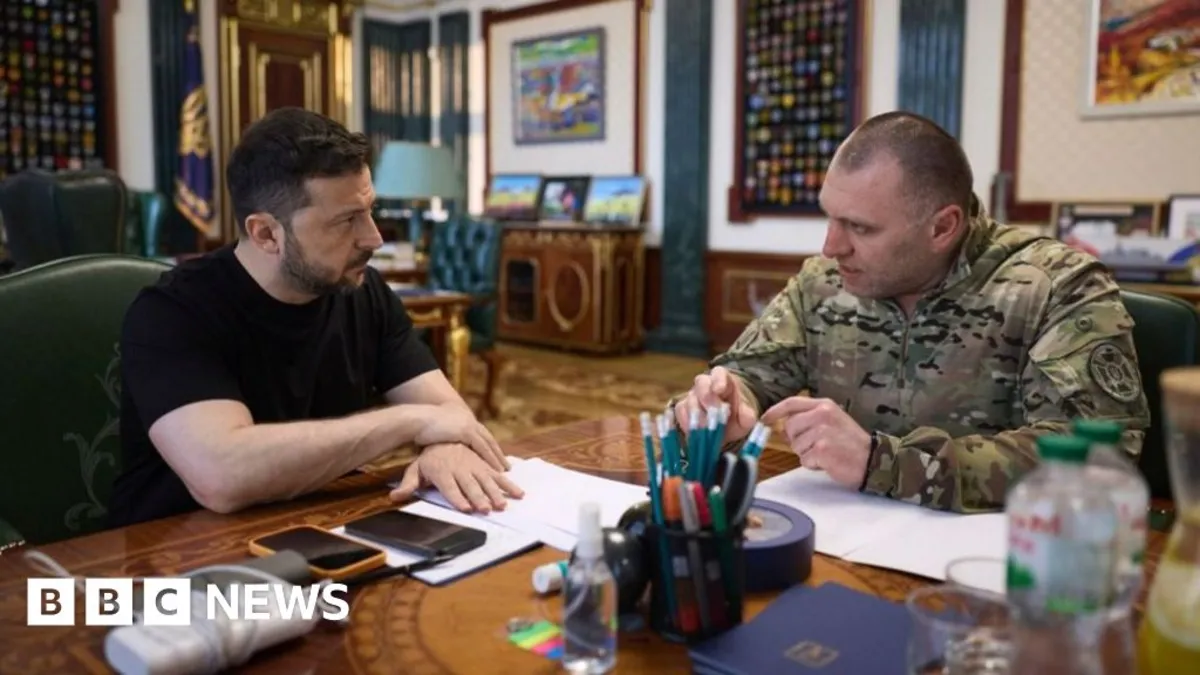
Ukrainian Drones launched a remarkable and unprecedented attack on 1 June, marking a significant moment in the ongoing conflict between Ukraine and Russia. More than 100 drones targeted air bases deep within Russian territory, specifically aiming at nuclear-capable long-range bombers. This operation, nicknamed Spider Web, was meticulously planned over a period of 18 months, showcasing an extraordinary level of strategic ingenuity.
The scale of the operation became apparent almost immediately, with explosions reported across multiple time zones within Russia, stretching from the northern region of Murmansk above the Arctic Circle to the eastern Amur region, over 8,000 kilometers away from Ukraine. The Russian Defence Ministry confirmed that the attacks occurred in five regions: Murmansk, Irkutsk, Ivanovo, Ryazan, and Amur. While they claimed that aircraft were only damaged in Murmansk and Irkutsk, they reported that attacks in other locations had been successfully repelled.
Vasyl Maliuk, the head of the Security Service of Ukraine (SBU), was seen analyzing a satellite map showcasing the airfields targeted during the attack. According to Maliuk, the drones were cleverly concealed within wooden cabins mounted on trucks, hidden beneath remotely operated detachable roofs. The drivers of these trucks were reportedly unaware of the drones they were transporting, as they were instructed to park in specific locations near the airbases. Once parked, the drones were launched towards their intended targets.
Footage circulating on social media captures the moment drones emerged from the trucks, further corroborating the operation's clever execution. An interview with a truck driver revealed that he and other drivers attempted to prevent the drones from flying away by throwing rocks at them. This highlights the confusion and surprise surrounding the launch of these drones.
Ukrainian President Volodymyr Zelensky, who oversaw the operation, celebrated the success of the attack in a social media post. He revealed that a total of 117 drones were utilized, emphasizing that the preparation for this operation took one year, six months, and nine days. Notably, one of the targeted locations was in close proximity to an office of the FSB, Russia's security agency.
In response to the operation, Russian authorities have detained individuals connected to the drone attack. However, Zelensky asserted that those who facilitated the operation have since been evacuated from Russian territory and are now safe. Local authorities from Ust-Kut in the Irkutsk region briefly sought a Ukrainian-born individual in connection with the attacks, indicating the ongoing investigation.
Images shared by the SBU depict a warehouse filled with small black drones neatly stored in wooden cabins, located in Chelyabinsk. Dr. Steve Wright, a drone expert based in the UK, noted that the drones used in the operation were relatively simple quadcopters capable of carrying significant payloads. The ability to smuggle them into Russia and operate them remotely is what made this attack particularly extraordinary, likely using a satellite or internet link for command and control.
Zelensky mentioned that each of the 117 drones was piloted individually, and Dr. Wright suggested that the drones may have utilized GPS for navigation while potentially overcoming Russian jamming measures through manual piloting. While Kyiv has not disclosed the origin of the drones, Ukraine has significantly ramped up its drone manufacturing capabilities since the onset of the conflict.
The operation inflicted serious tangible losses on Russia, according to Zelensky, who claimed that 41 strategic bombers were targeted, with at least 13 destroyed. While Moscow acknowledged some damage, they have not confirmed the loss of any aircraft. Verified videos by the BBC illustrate damaged aircraft at the Olenegorsk airbase in Murmansk and the Belaya airbase in Irkutsk. The strategic bombers targeted included models such as the Tu-95, Tu-22, and Tu-160, which are crucial to Russia's military capabilities.
Repairing these damaged bombers will prove challenging, as none are currently in production, making replacements impossible. Satellite imagery has confirmed significant damage to several long-range bombers at Belaya airbase, corroborating Ukrainian drone footage of the attack.
In a statement from the SBU, the operation Spider Web has reportedly cost Russia an estimated $7 billion (£5.2 billion). Interestingly, Russian state media has largely remained silent on the attacks, with coverage disappearing from news bulletins by the following morning. In contrast, Ukrainians celebrated the operation, with many praising it as a monumental achievement in their ongoing struggle against Russian aggression.
Zelensky concluded his remarks on Telegram by hinting that not all details of the operation could be disclosed at the moment, but assured that these actions would be remembered in the annals of history. The operation represents a significant escalation in the conflict, showcasing Ukraine's innovative approach to warfare and its capability to strike deep within enemy territory.